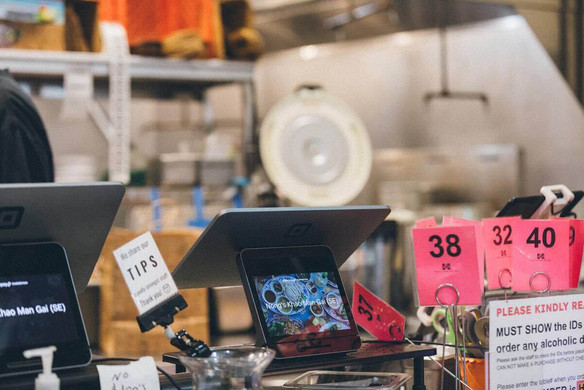Table of contents
For many small and mid-sized restaurant owners like myself, the big question around AI and automation is, “How can this benefit my business?” Any operator will tell you that it’s critical for the advantages of a new technology to outweigh the risk of it causing problems for staff and customers. Let’s face the music; plenty of small things need to go right for a good shift.
When I think about the daily tasks involved in running a restaurant, specifically a quick-service restaurant, I see promise across all aspects of the business.
Let’s walk through an average day at my restaurant, Cafe Beatrice, for example. In the morning, counter staff greet guests as they start coming through the door. Throughout the day, customers review a big digital menu, and they move through a line as they place their order. Behind the counter, our crew fulfills each order and preps inventory — refilling coffee, stocking pastries, and transitioning from breakfast items to lunch. After our last customers leave in the evening, we need to do back-office jobs such as tracking invoices and paying vendors. Several of these tasks involve repetitive and time-consuming processes, making them a great option for an AI solution to learn and automate.
At Square, we recently launched several generative AI tools to help restaurant owners put this into practice. AI-assisted team announcements help managers draft up messages to staff. Folks who are starting a new restaurant or opening another location can set up their inventory catalogs quickly with an AI-powered starter library. The AI tools available today can help restaurant owners automate operations, ensure things run efficiently, and ultimately give teams time back. As AI and automation technology mature and evolve in the food and beverage industry, I believe we’ll see greater benefits, such as the ability to serve guests with even more personalization.
How QSRs can use AI and automation tools today
The new features Square released span to help with getting a team or business onboarded and set up, creating web content, and making things run smoother. As someone who’s already begun to benefit from AI-powered back-office tools, I’m excited to see how other QSR operators, who navigate broader challenges related to staffing, the pressure to provide speedy service, responding to evolving consumer preferences, and more, will embrace these solutions.
Historically, my accountant tracked invoices on paper or via email. Every Thursday, they would collect each invoice from an envelope, then proceed to scan and digitize every one manually. It sounds like a simple enough process, but depending on when an invoice comes in, it could trigger a significant delay. Say an order for tomatoes came in on Monday. It wouldn’t be until the following week for the invoice to show up in our system.
Now, we have an AI-powered solution that manages the digitization process from start to finish. When an invoice is added to our accounting software, my team is automatically notified when a bill is due. The AI component can recognize that a previous ingredient, such as tomatoes, was categorized as produce and quickly sort things into their appropriate categories. As a result, our invoice processing system has a much smaller margin for human error, and the time it takes to process invoices has scaled back to under 24 hours.
Forecasting the future: Using AI and automation to drive personalization
While many of the AI-powered tools that exist for restaurants today are geared toward supporting staff, I believe we’ll soon be able to start using this same technology to understand customers better and use that information to guide our business decisions.
Having a tool that’s able to learn customers’ spending habits, similar to how my invoice-processing tool can identify our purchasing patterns, could open up ways for us to understand what ingredients to buy that will sell really well or respond to menu item trends more quickly. We can use the same information to make decisions about our overall hours of operation, which can inform how we staff and other cost-related business decisions.
As AI automation technology matures, not only will we be able to track what works best for the business overall, but it will also be possible to use individual customer data to provide personalized recommendations for guests. Think about it: if my customer ordered an iced vanilla latte the last three times they visited Cafe Beatrice, an AI-powered solution can flag this customer as a potential candidate who is more likely to use a BOGO coupon for that item when offered.
Putting AI and automation into practice puts your team in a better position.
I like to say restaurants are like mini factories. They run heavily on processes. Between raw goods coming in the door in the morning and the finished goods landing on guests’ plates, there are lots of different people and jobs to make that happen really well for amazing guests. While AI solutions won’t replace the value your staff brings to your restaurant, putting AI and automation tools in the hands of your team can give your staff a bird’s-eye view of the processes that make your restaurant run. Ultimately, this ensures your staff can optimize current processes and correct costly mistakes if and when they arise, before they get out of hand.
Similar to other restaurant technologies we’ve seen rise in popularity over the last few years, from digital reservation systems to online delivery platforms, those who embrace AI and automation early on will be better prepared to leverage it in ways that expand their businesses’s revenue streams.
![]()








